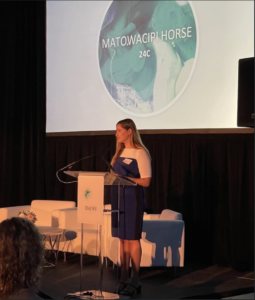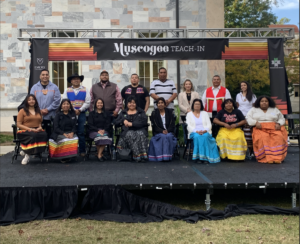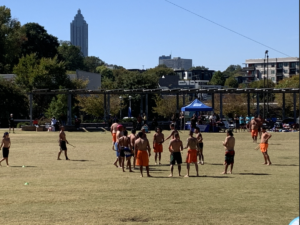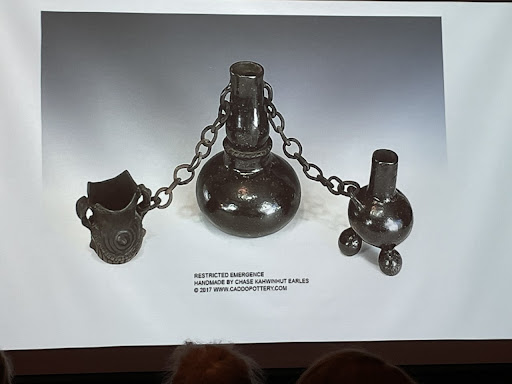
On October 24, 2022, Matowacipi Horse (24C), participated in Emory Explores the Future: Student Flourishing in DC, joining President Fenves and other deans of Emory University to in a celebration of student success at Emory.
Matowacipi recounts that her experience in Washington was “absolutely fantastic.” It was her first time traveling to the nation’s capital, where she encountered numerous historical and political significant places. As a Native American, these places held meanings that she has considered herself separated from before being welcomed in during her visit to Washington.
Emory’s office of Advancement and Alumni Engagement invited Matowacipi as a featured speaker at the event. Matowacipi delivered a five-minute speech on her experiences at Emory and the resources and programs she used or was a part of, and then introduced the panelist of the talk who discussed what the university was doing to support students. At the end of the panel,
Matowacipi had meetings with notable Emory parents, deans, and alumni in DC, including John Troutman (95C), Curator of American Music at the Smithsonian Institution’s National Museum of American History. During their discussions, she learned that he works closely with Dr. Malinda Lowery and that she is opening an exhibit in December. He also offered advice for graduate school and pursuing one’s interest. Her overall experience was positive.
Matowacipi ended the interview with this important takeaway for students, “If there’s any struggle you are going through at Emory, whether that be community, identity, financial, mental health, how to look for an internship, get a job, how to write a resume, there is someone there that can help you, you just need to ask. Your work and experience at Emory is important, people are going to do whatever they can to help you thrive, and that you have the self-advocacy to ask for support.”

 Emory University hosted its second series of Indigenous Language Path listening sessions on October 27th and 28th at Emory’s Oxford and Atlanta campuses. The events culminated with the Muscogee Teach-In on the academic quad.
Emory University hosted its second series of Indigenous Language Path listening sessions on October 27th and 28th at Emory’s Oxford and Atlanta campuses. The events culminated with the Muscogee Teach-In on the academic quad.

